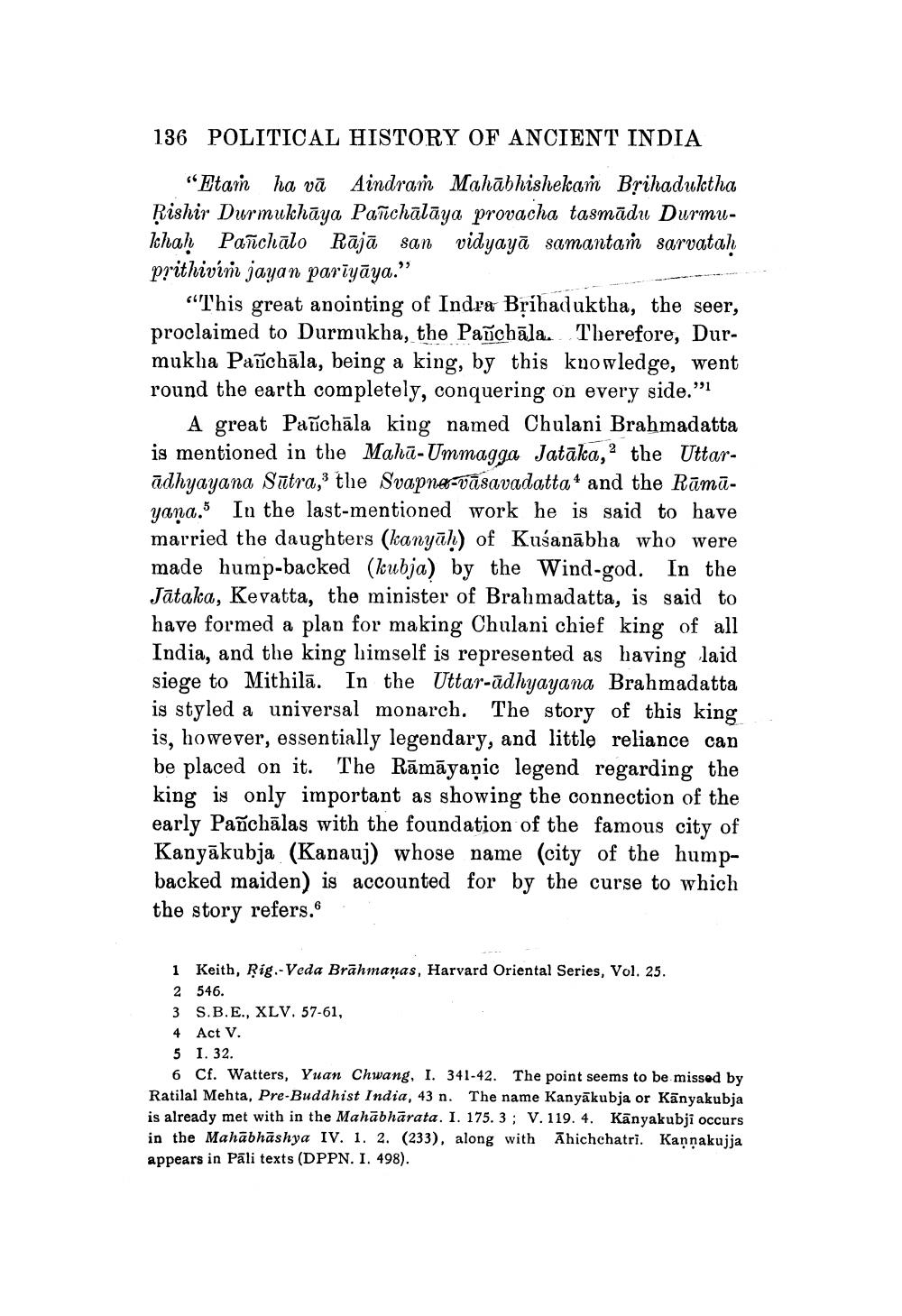________________
136 POLITICAL HISTORY OF ANCIENT INDIA
"Etam ha vā Aindraṁ Mahābhishekam Brihadultha Rishir Durmukhāya Pañchālāya provacha tasmādu Durmukhah Pañchālo Rajā san vidyayā samantam sarvatah prithivin jayan parīyāya.”
“This great anointing of Indra Brihaduktha, the seer, proclaimed to Durmukha, the Pañchāla. Therefore, Durmukha Panchāla, being a king, by this knowledge, went round the earth completely, conquering on every side.”'l
A great Pañchāla king named Chulani Brahmadatta is mentioned in the Mahā-Ummagga Jatāka,the Uttarādhyayana Sūtra, the Svapne-väsavadattat and the Rūmāyana. In the last-mentioned work he is said to have married the daughters (kanyāh) of Kušanābha who were made hump-backed (kubja) by the Wind-god. In the Jātaka, Kevatta, the minister of Brahmadatta, is said to have formed a plan for making Chulani chief king of all India, and the king himself is represented as having laid siege to Mithilā. In the Uttar-ūdhyayana Brahmadatta is styled a universal monarch. The story of this king is, however, essentially legendary, and little reliance can be placed on it. The Rāmāyaṇic legend regarding the king is only important as showing the connection of the early Pañchālas with the foundation of the famous city of Kanyākubja (Kanauj) whose name (city of the humpbacked maiden) is accounted for by the curse to which the story refers.6.
1 Keith, Rig.- Veda Brāhmanas, Harvard Oriental Series, Vol. 25. 2 546. 3 S.B.E., XLV. 57-61, 4 Act V. 5 I. 32.
6 Cf. Watters, Yuan Chwang, I. 341-42. The point seems to be missed by Ratilal Mehta, Pre-Buddhist India, 43 n. The name Kanyākubja or Kānyakubja is already met with in the Mahābhārata. I. 175. 3; V. 119. 4. Kanyakubji occurs in the Mahābhāshya IV. 1. 2. (233), along with Āhichchatri. Kannakujja appears in Pāli texts (DPPN. I. 498).




